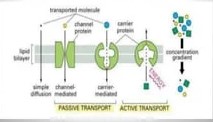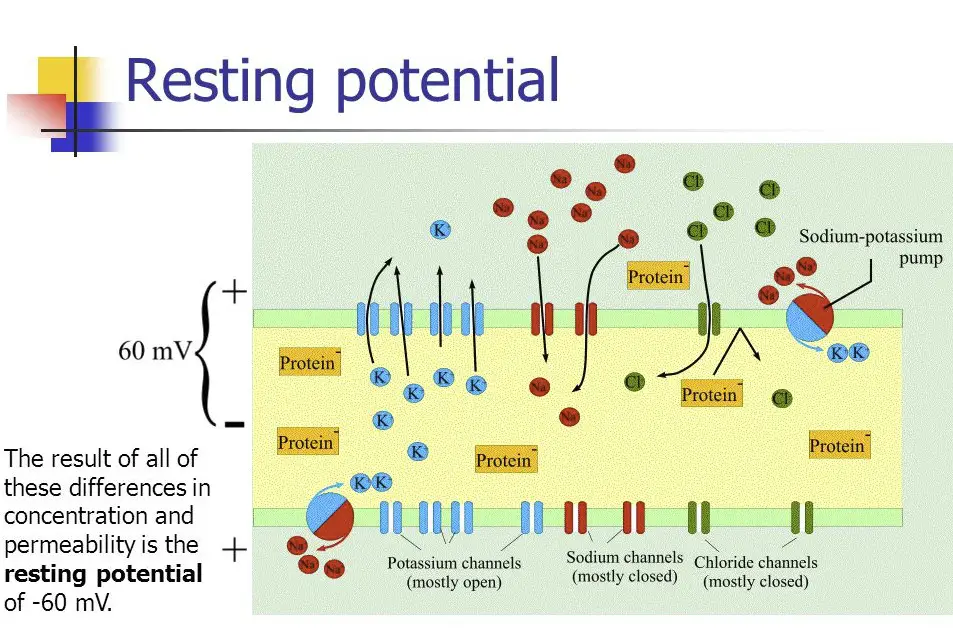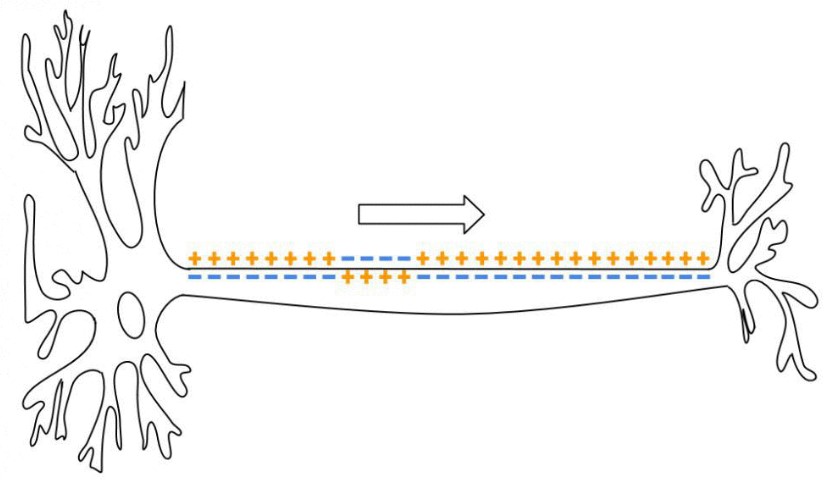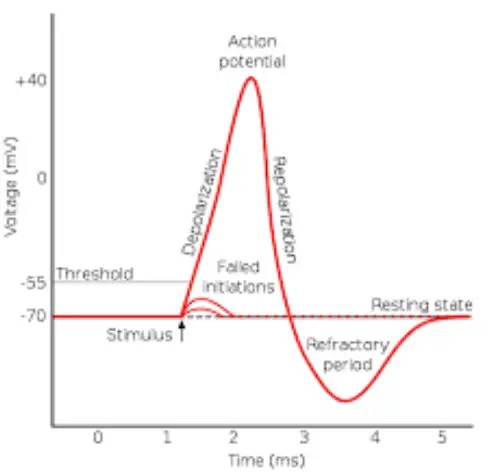Nerve cells, or neurons, are the core components of the nervous system, responsible for transmitting signals that coordinate actions and sensory information throughout the body. These cells communicate through a fascinating process involving electrical signals, a fundamental aspect of how the brain and nervous system function. The interplay between different types of potentials within neurons is crucial for the transmission of these signals.
The difference between resting potential and action potential lies at the heart of neuronal communication. Resting potential is the electric charge difference across the neuron’s membrane when it is not actively sending signals, while action potential is the rapid change in electric charge that travels along the neuron’s membrane when a signal is sent. This dynamic shift from resting to active states enables the transmission of information within the nervous system.
Understanding these processes provides insights into the complex mechanisms neurons use to communicate. The resting potential sets the stage for action potential, creating a baseline from which signals are generated and sent. This seamless transition between resting and active states is vital for functions ranging from basic reflexes to complex thoughts, making the study of these potentials fundamental to neuroscience and medical research.

Basic Concepts
Nerve Cell Structure
Neurons and Their Functions
Neurons, the building blocks of the nervous system, play a critical role in everything from simple reflex actions to complex cognitive processes. Each neuron communicates with others to form networks that underpin bodily functions and behaviors.
Key Components
- Axon: The long, thin structure that transmits electrical signals away from the neuron’s cell body.
- Dendrites: Branch-like structures that receive messages from other neurons.
- Soma: The cell body of a neuron, containing the nucleus and organelles, responsible for metabolic activities.
Electrical Signals in Neurons
Role of Electrical Signals
Electrical signals are the language of neurons. They enable communication within the nervous system, allowing us to think, feel, and move.
How Neurons Communicate
- A neuron receives signals through its dendrites.
- If the signals are strong enough, they trigger an action potential in the axon.
- This electrical pulse travels down the axon.
- The neuron releases chemical messengers, or neurotransmitters, across synapses (gaps between neurons) to pass the signal to the next neuron.
Resting Potential
Definition
What is Resting Potential?
Resting potential is the voltage difference across the neuron’s membrane when it’s not actively sending a signal. It’s the neuron’s stable, baseline state.
Mechanisms
Ion Distribution
The resting potential is mainly due to the difference in ion concentration inside and outside the neuron. Potassium (K+) is higher inside, while sodium (Na+) is higher outside.
Membrane Permeability
The neuron’s membrane is selectively permeable, allowing K+ to move more easily than Na+. This selective movement contributes to the resting potential.
Role of the Sodium-Potassium Pump
The sodium-potassium pump uses energy to move three Na+ ions out and two K+ ions into the neuron. This action maintains the ion gradient, crucial for the resting potential.
Significance
Resting Potential’s Importance
Resting potential allows a neuron to be ready to fire an action potential. It’s essential for neural function, serving as the starting line for neuronal communication.
Action Potential
Definition
What is Action Potential?
An action potential is a rapid change in voltage across a neuron’s membrane. It’s how a neuron sends a signal, a brief reversal of the resting potential.
Phases
Depolarization
The initial phase where the membrane’s voltage becomes more positive, moving towards zero and beyond.
Repolarization
After depolarization, the membrane’s voltage returns to a negative value, moving back towards the resting potential.
Hyperpolarization
A temporary phase where the membrane’s voltage becomes even more negative than the resting potential before stabilizing.
Mechanisms
Ion Channels’ Role
Voltage-gated ion channels open or close in response to voltage changes, allowing Na+ and K+ to move across the membrane.
Threshold Concept
An action potential occurs if the membrane’s voltage reaches a threshold. Below this threshold, no action potential is triggered.
All-or-None Principle
An action potential either happens fully or not at all. Once the threshold is crossed, the neuron fully responds.
Significance
Action Potential’s Importance
Action potentials enable rapid signaling across neurons. They are crucial for everything from reflexes to complex thoughts, highlighting the efficiency of the nervous system’s communication system.

Key Differences
Voltage Changes
Resting vs. Active States
The resting potential represents the neuron’s state when it is not sending a signal. In contrast, the action potential reflects the active state, where the neuron is in the process of communicating. The resting potential is typically around -70 millivolts (mV), indicating a negative charge inside the neuron compared to outside. When an action potential occurs, the charge inside the neuron becomes momentarily positive, reaching up to +30 mV or more, showcasing a significant magnitude of change in electrical charge.
Magnitude of Change
The transition from resting to action potential involves a substantial shift in membrane voltage. This voltage change is critical for the neuron to send signals across its length and to other neurons, enabling complex networks of communication within the nervous system.
Ion Movement
Specific Ions Involved
Potassium (K+) and Sodium (Na+) play pivotal roles in generating resting and action potentials. The resting potential is maintained mainly due to the higher concentration of K+ inside the neuron and Na+ outside. During an action potential, Na+ ions rush into the neuron, and K+ ions leave, reversing the membrane’s electrical charge.
Direction of Movement
- Resting Potential: K+ ions tend to move out of the neuron, making the inside negatively charged compared to the outside.
- Action Potential: Na+ ions enter the neuron, making the inside positively charged, followed by K+ exiting to restore the negative charge.
Role in Neuronal Communication
How Each Contributes to Signaling
Both resting and action potentials are essential for neuronal communication. The resting potential keeps the neuron ready to respond to stimuli. When a stimulus is strong enough to reach the threshold, an action potential is triggered, allowing the neuron to send a fast, strong signal. This dynamic interaction ensures efficient communication across neural networks.
Implications in Neuroscience
Research and Discoveries
Insights Gained from Studying Potentials
Studying resting and action potentials has provided profound insights into how neurons communicate and how various neurological conditions can affect this communication. Researchers have been able to map out neural pathways, understand the basis of neural plasticity, and explore how memories are formed and stored at the cellular level. This knowledge is pivotal for both basic neuroscience and its application in medical science.
Clinical Relevance
Conditions Affecting Neural Signaling
The study of resting and action potentials has direct implications for understanding and treating conditions that affect neural signaling. Disorders such as epilepsy, multiple sclerosis, and Parkinson’s disease involve disruptions in normal electrical signaling in the brain. By understanding the mechanisms behind these potentials, researchers can develop targeted treatments to restore normal function or mitigate symptoms. For instance, medications that modify ion channel activity are commonly used to manage epilepsy, illustrating the clinical significance of these electrical phenomena in the nervous system.

FAQs
What triggers an action potential?
An action potential is triggered when a neuron’s membrane potential becomes more positive than its resting potential, reaching a threshold that causes ion channels to open. This results in a rapid influx of sodium ions into the neuron, changing the electric charge across the membrane and initiating the action potential.
How do resting and action potentials work together?
Resting and action potentials work together to enable neurons to communicate. The resting potential maintains a stable environment that allows the neuron to be ready to activate. When specific conditions are met, the action potential is triggered, sending a signal down the neuron. This process is essential for the transmission of information throughout the nervous system.
Why is the sodium-potassium pump important?
The sodium-potassium pump is crucial for maintaining the resting potential of a neuron. It actively transports sodium ions out of the neuron and potassium ions into it, against their concentration gradients. This action helps to keep the inside of the neuron negatively charged compared to the outside, which is vital for the neuron’s ability to generate action potentials.
Conclusion
The intricate dance between resting potential and action potential underpins every thought, movement, and sensation experienced by living organisms. These electrical phenomena not only illuminate the fundamental principles of neural communication but also highlight the remarkable efficiency and complexity of the nervous system. By understanding the distinct yet interconnected roles of resting and action potentials, we gain deeper insights into the mechanisms that govern life itself.
In exploring the depths of neuronal communication, we uncover the essence of biological processes that define our existence. The study of resting and action potentials is not just an academic endeavor but a journey into understanding the very fabric of life. Through this knowledge, we are better equipped to appreciate the marvels of the human body and address the neurological disorders that disrupt these essential processes.

